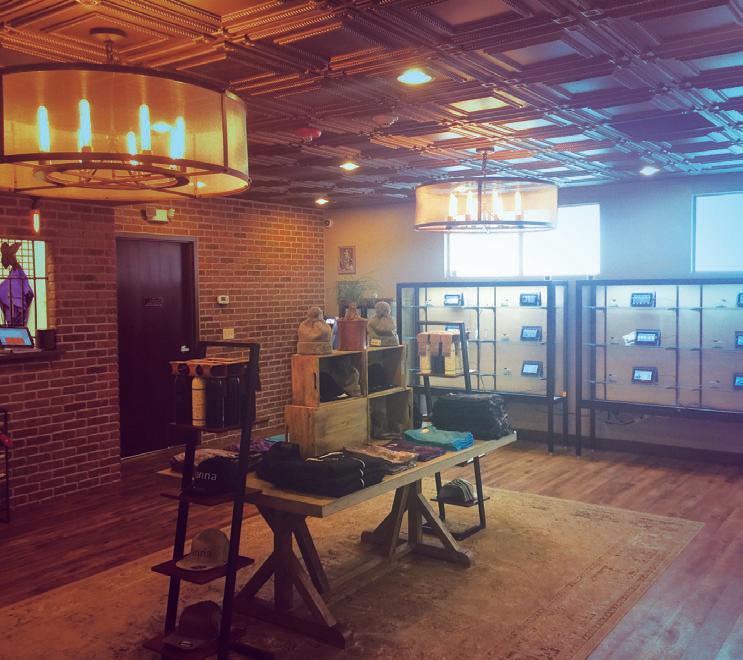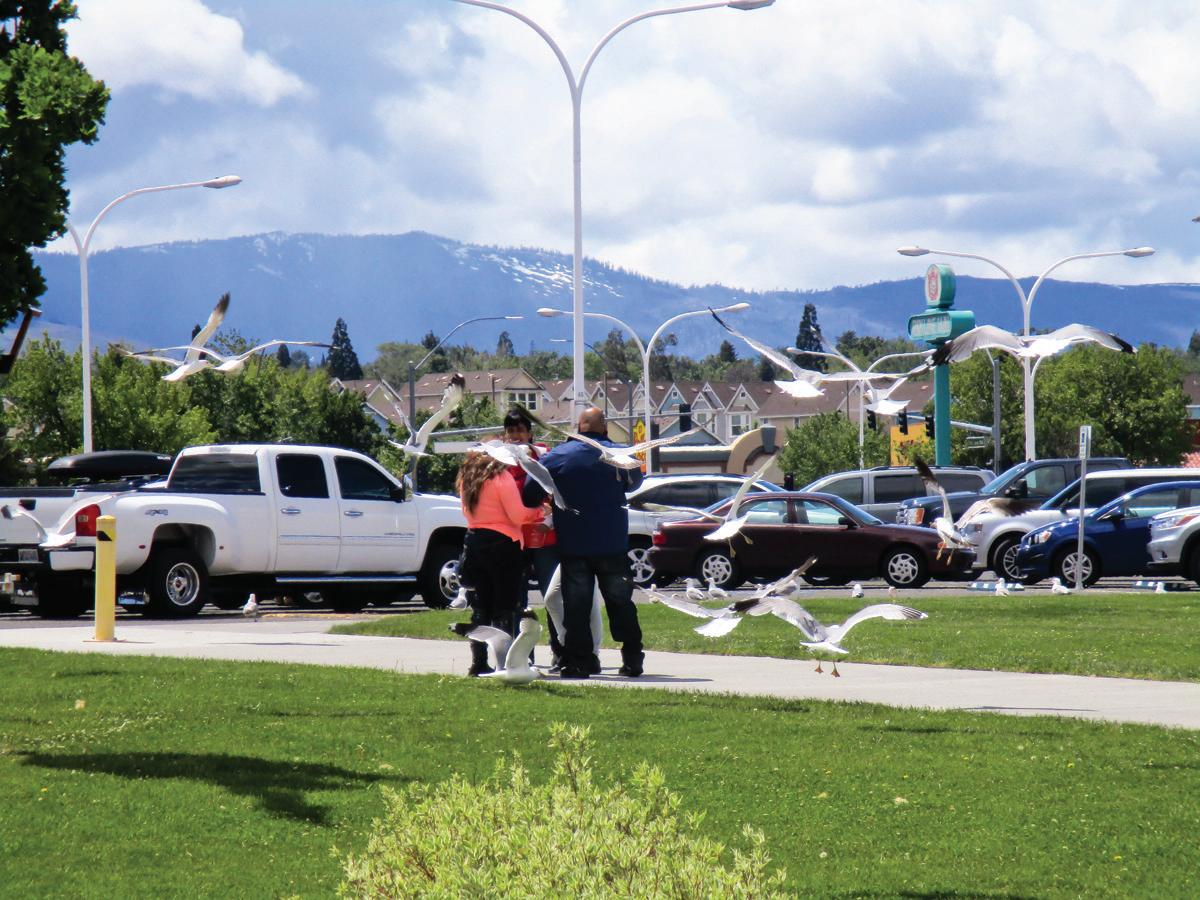
9 minute read
News
from June 2, 2016
Conventional wisdom
A survey of some state and county Democratic convention rules suggests Nevada’s Democratic Party was not out of the mainstream in blocking the Sanders’ campaign effort to substitute Robert’s Rules of Order for the homegrown set of rules devised by Nevada party leaders at the May 14 convention.
Advertisement
But it also finds that Robert’s Rules are widely used, that the use of voice votes for all votes is rare and possibly unknown among other states, and that Nevada uses super-majorities more often than most states surveyed. The Nevada Democratic rules contain two requirements for two-thirds vote thresholds and one for a three-fourths threshold. And another rule reads, “All votes taken at the state convention shall be by voice vote unless otherwise provided.”
Some commentators have said that because Clinton had a majority in the Nevada convention, convention rules mattered little, that her campaign would work its will. But if the motion to switch to Robert’s Rules had been a majority vote motion instead of a supermajority, the Sanders campaign would only have had to get 17 of Clinton’s votes. Since some Clinton delegates believed the Sanders delegates were being badly treated, that would have been within reach. But the two-thirds vote requirement plus the refusal of convention officers to use other than voice votes left the Sanders campaign with no recourse. In addition, their motion was not accepted.
Not all county and state parties post their rules online, but of those that do, Virginia, Oregon and Washington Democratic parties all have a two-thirds requirement delegates must meet in order to replace rules proposed to the convention by party leaders. In O‘ahu County, Hawaii, the only use made of a two-thirds threshold is when someone tries to bring a matter to the convention floor without first taking it to committee. Supermajorities are used sparingly in most places.
Most state and county parties we surveyed made no use of voice votes. In fact, they were not even mentioned in some state rules, such as Utah. Washington actually prohibits voice votes. In Oregon, “If there is only one person nominated for [a party] office, the election may be held by voice vote.”
Voice votes allow the chair to determine who won, and in Nevada the rules do not provide for real votes if delegates call for it. But other states do allow it in various ways. “A roll call vote shall be taken upon the request of 25 delegates,” is an Oregon rule.
Robert’s Rules are widely accepted. In Virginia, Hawaii, Utah, and DuPage, County, Ill., they are the convention rules. The same is true in several counties in Iowa, the first state to hold a presidential voting event. In various states—including Nevada—they are the secondary set of rules, coming into play when an issue is not addressed in state rules.
The way convention rules can be used to favor factions or candidates was demonstrated in 2012 after Mitt Romney nailed down enough delegates to win the Republican presidential nomination. When delegates arrived at the convention, they were given a set of rules that included rule 40b, which effectively eliminated U.S. Rep. Ron Paul as a candidate by barring candidates who did not have “a majority of delegates from at least eight states” from even being considered by the convention. Nevada’s Republican delegates, pledged to Romney on the first ballot, withdrew their votes from him in protest and voted for Paul.
An effort to get rid of 40b—and any additional manipulation it would foster of the rules this year—by replacing the Republican National Convention rules with Robert’s Rules failed in April. —Dennis Myers
NV Energy’s claim that most power customers subsidize those with rooftop solar is being hotly disputed.
Who’s subsidizing whom?
Net meterers may be supporting other customers
In April, after the Nevada Public Utilities Commission gave NV Energy a by rate increase and a new fee paid Dennis Myers by solar customers, the corporation inserted into its monthly bills a leaflet titled “Net Metering 2016/ Update and FAQs.”
Brookings Mountain West
“Rooftop solar customers use the electric grid to receive and send energy,” the leaflet told customers. “This is a different usage pattern than other electric service customers. These new rates reflect the fact that net metering customers receive unique services and the cost of providing those services is different than providing service to other customers who do not own their own electric generation equipment. Prior to these new rules, customers without rooftop solar were subsidizing those customers with rooftop solar systems.”
This is the argument Warren Buffett’s monopoly NV Energy has used all along, and it prevailed with the Nevada PUC in December, when commissioners voted unanimously to reduce the payments homeowners receive for generating solar power and sending it back to the grid, the practice known in law as net metering.
The decision came at the request of NV Energy, which argued, “These charges are based on the specific costs that the companies incur to provide electric service to customers who install intermittent, renewable generation.” It also came in spite of a study commissioned by the PUC itself that found net metering was subsidizing other customers.
The Nevada decision attracted wide attention and came in the midst of a national campaign by NV Energy owner Warren Buffett in legislatures and utility commissions to put an end to net metering. Buffett was quoted saying that he was ready to build traditional large-scale power plants “as far as the eye can see.”
On May 23, Brookings Mountain West—the western arm of the Brookings Institution—issued a paper that read in part, “[T]he ferment has prompted a cruder set of backlashes. Most pointedly, some utilities contend that the ‘net-metering’ fees paid to homeowners with rooftop installations for excess solar power they send back to the grid unfairly transfer costs to the utilities and their non-solar customers.”
The NV Energy claim that regular customers were subsidizing net metering customers was largely successful as public relations, with many news reports citing it as fact, a neat illustration of the pitfalls of pack journalism, because there were significant challenges to that conclusion all along. With studies of the issue piling up, the Brookings paper last week found:
“So what does the accumulating national literature on costs and benefits of net metering say? Increasingly it concludes—whether conducted by PUCs, national labs, or academics—that the economic benefits of net metering actually outweigh the costs and impose no significant cost increase for non-solar customers. Far from a net cost, net metering is in most cases a net benefit—for the utility and for non-solar rate-payers.”
Mark Muro, one of the authors of the paper, said it was not commissioned by any group or corporation but was done on Brooking’s own initiative.
The paper cites studies by Vermont, Mississippi, Minnesota and Maine—and Nevada, which all find that net metering is carrying its own weight. It references one study, from Louisiana, that does not. In addition to the states studies, the Brookings paper also made use of research by campuses and other think tanks.
Of the Nevada study paid for by the public, Brookings observes, “In 2014 a study commissioned by the Nevada Public Utility Commission itself concluded that net metering provided $36 million in benefits to all NV Energy customers, confirming that solar energy can provide cost savings for both solar and non-solar customers alike. What’s more, solar installations will make fewer costly grid upgrades necessary, leading to additional savings. The study estimated a net benefit of $166 million over the lifetime of solar systems installed through 2016. Furthermore, due to changes to utility incentives and net-metering policies in Nevada starting in 2014, solar customers would not be significantly shifting costs to other ratepayers.” Contesting studies
Does the action by the Nevada PUC in December effectively raise costs to regular customers by removing a subsidy from net metering customers?
Muro: “That’s an interesting question. In theory it does.”
Former Nevada state consumer advocate Timothy Hay: “That’s a little tricky to answer. [NV Energy] will be getting more money from the fixed
fee from net metering customers. … There are extra dollars in the pool that will have to be accounted for at some point, but it’s just extra money for the company at this point.”
More than 40 states require net metering plans, and most of them mandate that utilities purchase energy generated by homeowners and businesses beyond their own needs. The Nevada PUC commissioners had two reports on the subsidy issue before the December decision was made—an NV Energy report and a PUC-commissioned report. The PUC decided to accept the findings of the NV Energy report.
As journalists reported the subsidy argument as fact, some groups otherwise hostile to policies that encourage alternative energy seized on the claim and helped spread it. For instance, the Citizens Against Government Waste website reads, “Current net metering polices help rooftop solar customers avoid paying for many of the fixed costs of the electric grid that they rely on for electricity day and night. As a consequence, there is a considerable cost shift to non-solar customers in order to subsidize solar customers for utilizing the grid.”
A soon as the Nevada PUC decision was announced last year, it was subjected to scrutiny from both sides.
A Forbes magazine columnist wrote, “Even the PUC’s staff, which strongly supported NV Energy’s proposals to revise the NEM rules, recognized ‘that NEM ratepayers do not impose any significant additional costs on NV Energy or other ratepayer classes at this time.’ An independent study of the economics of Nevada’s NEM policies ... concluded that NEM ratepayers actually created a $36 million net benefit for non-NEM ratepayers. In other words, NEM ratepayers with rooftop solar were not free riders and NEM policies did not shift costs from NEM ratepayers to non-NEM ratepayers.”
But a Wall Street Journal colum-
nist wrote, “[Net metering] sounds like a great deal—but there’s no free green lunch, and non-solar utility customers must underwrite this hidden subsidy. Nevada’s utility commission estimates that non-solar ratepayers—who tend to be lower income—subsidize each solar user in southern Nevada to the tune of $623 per year. Most of this flows to solar-leasing company investors such as J.P. Morgan Chase, Goldman Sachs and Citigroup.” Ω
NV Energy

Best Medical Marijuana DISPENSARY IN RENO
We Offer The Highest Level Of MedicalGrade Marijuana And The Broadest Selection Of Alternative Health Resources And Educational Assistance
Cineflyers

• Premium Marijuana • Locally Grown • Wide Variety of Strains • Delivery Service Available • Open 7 Days A Week
Visit Us Today For a Free Consultation Learn How Nevada Residents And Out-Of-State Customers Can Purchase From Our Dispensary
20% OFF
For New Patients With This Ad!
For some reason, seagulls have been nesting on the fenced-in former Park Lane Mall site. Sometimes they come next door to the movie theater to greet arriving or departing moviegoers.
5398 SUN VALLEY BOULEVARD | SUN VALLEY, NV 89433
Serving Sun Valley, Reno and the Lake Tahoe Region MON-SAT 9AM-7PM | SUNDAY 9AM-5PM 1-775-674-0420 | www.kannareno.com











